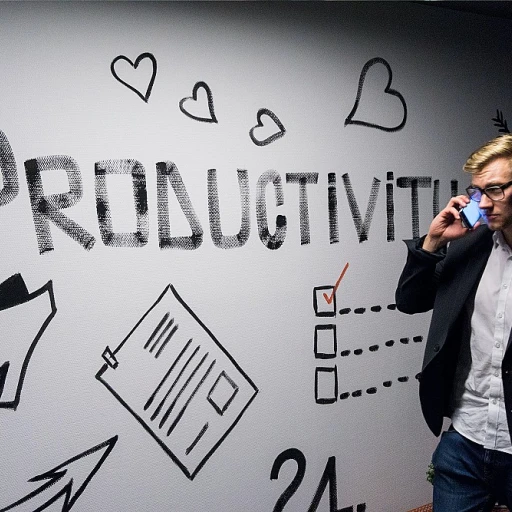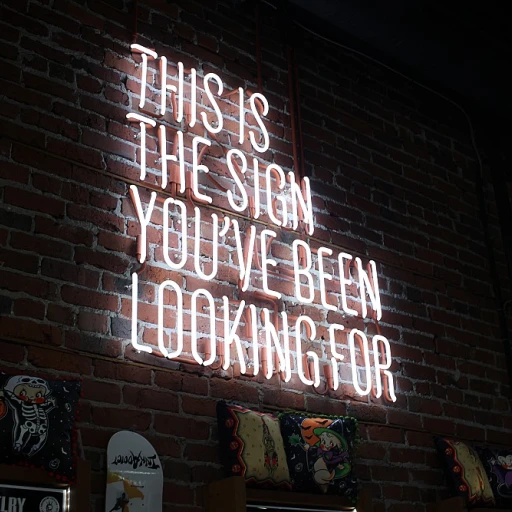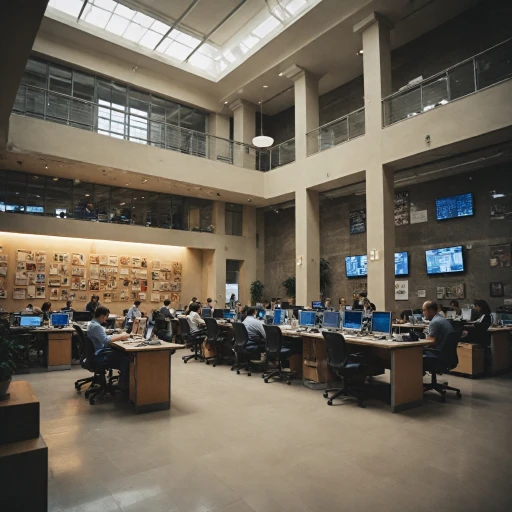Redefining Meeting Culture: Why Efficiency in Meetings Matters
Unlocking the Value of Time: Efficient Meetings
When we dwell on the concept of meeting culture, the term 'efficiency' constantly emerges like a beacon, guiding the transformation of time-consuming gatherings into powerhouses of productivity. A staggering figure showcases the urgency of this metamorphosis: a study found that professionals lose 31 hours per month to unproductive meetings, which echoes the dire need for reshaping our approach to these corporate rituals.
To grasp the full magnitude of this conundrum, we need look no further than the tales told within the walls of countless boardrooms across the United States and Canada. Here, the incessant ticking of the clock serves as a reminder that time is of the essence. It's a finite resource that, when squandered in aimless assemblies, can cripple a team's spirit and ultimate success.
Understanding this, the savvy orchestrators of the corporate symphony don't just convene meetings; they choreograph experiences that galvanize action. To this effect, modern business strategies must incorporate this recognition, fusing incentive schemes with meeting efficiency to produce a more harmonious work environment.
Statistical Signposts: Guiding Metrics for Meeting Efficiency
Diving into the numbers reveals poignant insights. For instance, when 'meeting management' gurus from Harvard assessed various organizations, they illuminated a striking fact: Companies that adhered to well-established meeting practices witnessed a remarkable 200% leap in decision effectiveness. These practices ranged from setting clear agendas to assigning specific roles, like a 'Polly' to poll opinions and streamline decision-making.
The narrative corresponds with reports unfurling across various industries, citing that an effective meeting framework empowers attendees to contribute more enthusiastically. Within this construct, the roles of 'people ops' and 'employee experience' are cast in starring roles, ensuring that every participant—whether they're collaborating in-person or engaging in remote work—feels valued and heard.
Realigning Meeting Objectives: Purpose Over Presence
Amid the busy hum of the workplace, the transformative mantra for any meeting should be 'purpose over presence.' A clarion call for intentionality, this approach insists on a well-defined meeting agenda that aligns with the broader goals of the organization. This is where the art of agenda curation becomes paramount, acting as a blueprint that directs the collaborative engine towards tangible outcomes.
With the elevating rates of remote work, cultivating a meeting environment where every participant, regardless of location, becomes a vital contributor is no longer a 'nice-to-have' but a critical goal. This necessitates a shift from mundane gatherings to strategic symposiums, where ideas flourish and decisions are not merely discussed but made. In this context, action items and minutes emerge as twin pillars upholding the edifice of meeting effectiveness, providing clarity and direction well beyond the meeting room.
Embracing Tools for Meeting Mastery
In response to this clarion call, a burgeoning array of digital tools stands ready to assist. Video conferencing solutions have surged in prominence, emerging as the go-to platforms for remote team collaboration. Simultaneously, meeting management software has risen from a burgeoning necessity to an indispensable lever in the machinery of corporate efficiency. Such tools are designed to corral the myriad threads of meeting preparation, execution, and follow-up into a cohesive tapestry of productivity.
Platforms enabling communication templates, action item tracking, and real-time collaboration are redefining the very foundations of meetings. They act as modern-day alchemists, turning the leaden weight of unstructured discussions into the gold of streamlined, purpose-driven collaboration. It's these innovations that are painting a future where 'meeting' is no longer a byword for inefficiency, but a synonym for empowerment and result-oriented dialogues.
In translating these insights into action, teams can alter the very trajectory of their meeting culture, setting sail on a course charted for success. The message is clear: Manage meetings effectively, and watch as they evolve from time-consuming obligations into catalysts for progress.
The Art of Crafting a Purposeful Meeting Agenda
Sharpening Your Meeting's Focus with a Tailored Agenda
Ever sat through a meeting feeling like it was a road trip without a map? Remember, a well-defined meeting agenda isn't just a list; it's the roadmap to a destination called 'productive outcomes.' A purposeful meeting agenda is akin to a finely tuned instrument in an orchestra where each note contributes to the symphony of success.
When we talk about crafting this not-so-mythical agenda, we’re focusing on intentionality. According to a study by Steven Rogelberg et al., published in the Journal of Applied Psychology, decisions accounted for about 37% of meeting time, highlighting the importance of carefully selecting agenda items to maximize this time.
An agenda shaped with precision ensures that your team is aligned on meeting management objectives right from the get-go. It's no wonder experts suggest spending time on agenda creation as it correlates with higher meeting effectiveness. Let's dissect this further:
Constructing Your Agenda: From Brainstorm to Boardroom
Ideas sprout from thinking minds, and when you involve your team in the agenda-building process, you sow seeds of engagement. Use communication templates as a starting point and encourage contributions, as this fosters a collaborative climate. Imagine bringing everyone's superpowers to the table.
Data from the Harvard Business Review showcases how companies with exemplary talent for collaboration were 5 times more likely to be high performing. It all starts with the meeting agenda being the nexus of shared ideas and expectations.
Yet, without a concise agenda, meetings can quickly become a whirlwind of tangents. Keep it focused, actionable, and bounded by time. Think about including precise action items on your agenda – after all, a strong agenda leads to actionable insights, which is better than wandering through the maze of unstructured discussion.
Supporting with Structure: Agenda Items as Guideposts
Picture this: As every participant tunes into the meeting, they find a clear set of guideposts, leading them through discussions, decisions, and desired end-results. List agenda items by priority to tackle the big rocks before you sift through the sand. It's the kind of time management that winners swear by.
Consultant and author Roger Schwarz advocates for agendas that allow room for flexibility while sticking to the critical path. And let’s not forget, adhering to the agenda helps in documenting meeting minutes efficiently, ensuring that points aren’t missed and decisions are recorded. This is where meeting management software can step in to keep everything uptight and out of the weeds.
Now, let’s loop in action items. Assign clear responsibilities and deadlines to avoid the ambiguous 'we' and ground those high-flying ideas with specifics. Remember, clear agendas are the propellers that keep the ‘plane’ of your meeting from strolling into the sunset without a destination.
Sealing the Deal with Real-Time Revisions
As you master the art of meeting management, remember to adapt. Agile teams know that a static agenda in a dynamic environment is like trying to capture a snapshot of the ocean – it never really tells the whole story. Adapt your agenda in real-time when necessary, making on-the-fly tweaks to reflect the flow of the meeting. It's a subtle art that maintains relevance and respects participants' time.
Agility in adjusting the agenda could be encouraged by tools like strategic hiring tools, which highlight the importance of adaptable, skill-based teams in modern businesses. This adaptability serves as a beacon in navigating the complexities of meeting dynamics.
Mobilizing Meetings: Beyond the Agenda
Tailoring each meeting agenda to its unique audience and purpose sets the stage for a symphony of collaboration, but it doesn’t end there. How you mobilize your team post-meeting, with clear action items and responsibilities, determines the continuum of effectiveness and shapes the employee experience.
Let's not forget, a good agenda must live beyond the confines of the meeting room. Make it accessible, make it dynamic, and most importantly, make it actionable. This is how you transform mundane meetings into vibrant hubs of productivity – the kind that propels organizations forward in the competitive landscapes of the United States and Canada.
The Role of Meeting Facilitation Software in Driving Team Participation
Embracing Technology: Meeting Facilitation Software as a Game Changer
The tides in meeting management are turning, anchored by savvy technological tools that enhance collaboration and participation. In an age where every minute counts, meeting facilitation software has emerged as a pivotal player in the orchestration of team interactions.
Consider strategic business leadership, where decision-making is increasingly data-driven. The modern meeting facilitation platforms embody this trend, ensuring that meetings are not just gatherings but powerhouses of shared intelligence. Experts in organizational behavior have noted a critical shift towards incorporating these digital tools in everyday operations to drive engagement and productivity.
Navigating Meeting Complexity with Intuitive Software
The choice of software can make or break the ebb and flow of a meeting's dynamics. Meeting facilitation tools like Polly, with features such as real-time polling and interactive Q&A, have revolutionized how participants contribute to discussions. Recent studies spotlight that when teams employ such software, attendees report feeling more included and engaged, which is a linchpin for a successful corporate culture.
Real-Time Engagement Metrics to Measure Participation
Effective meeting facilitation software does more than just aid in the conduct of a meeting; it provides invaluable metrics on participant engagement. Managers can now lean on data that shows not only who is contributing but also how often and in what manner. These insights can help tweak future agendas to ensure that all voices are heard and valued.
Democratizing Decision-Making with Collaborative Features
Decision-making is no longer a solitary road traveled by the few at the top. With features that streamline the voting process on agenda items or action points, meeting facilitation software fosters a democratic environment. This inclusivity directly correlates with the willingness of team members to contribute proactively in meetings.
From Monologue to Dialogue: Interactive Meeting Experiences
Shifting from the monologue style of meetings to an interactive dialogue is pivotal. Software that allows for anonymous feedback and question submissions can transform the participant experience. By removing the fear of judgment, employees can freely express their ideas, significantly elevating the value derived from meetings.
The Bottom Line: Software that Serves as a Catalyst for Engagement
In essence, meeting facilitation software is the connective tissue that binds the human and digital aspects of meetings. It is a testament to how judiciously chosen technology can augment traditional meeting management practices to produce favorable outcomes for both individuals and the organization as a whole.
Tackling Time Management: Strategies for Keeping Meetings on Track
Mastering the Clock: Proven Tactics for Time-Conscious Meetings
Imagine this scenario: the room is filled with eager faces, the topic is set, but as the seconds tick by, attendees start glancing at their watches, and the meeting aimlessly stretches on. Sound familiar? The culprit is often poor time management, a component of meeting management that, when tweaked right, can turn drawn-out talks into efficient idea exchanges. So, what's the secret sauce? Let’s dive into some strategies.
Structuring with Precision: The Role of Meeting Agendas
Going in without a plan is like setting sail without a compass. A well-defined meeting agenda is crucial. It's not merely a list; it's a roadmap that guides stakeholders through the landscape of discussion points, ensuring no precious minute goes to waste. Effective agendas include time allotments per item, clear objectives, and designated presenters. Studies suggest that a timed agenda can reduce meeting times by up to 80% - that’s a statistic that should make anyone sit up and take meeting prep seriously.
Timekeeper Techniques: Training and Tools
Every ship needs a captain, and every meeting benefits from a timekeeper. This role goes beyond mere clock-watching. By gently nudging the conversation along and keeping an eye on the allocated times for agenda items, a timekeeper helps maintain the meeting's pace. With the advent of smart meeting management tools, this task is made even more manageable. Software like Polly, equipped with timing functions, can assist in keeping sessions in check and provide actionable insights for future improvements.
Decision-Driven Discussions: Keeping the Endgame in Sight
Meetings should be battlegrounds of ideas, not where time goes to die. A focus on decision-making, rather than endless deliberation, roots the conversation in action. A Harvard Business Review article highlights that a decision-focused approach can make meetings 12% shorter and substantially more productive. This method ensures that decisions are reached, action items are set, and participants leave with a clear understanding of their next steps.
Encouraging Engagement: The Power of 'The Two-Pizza Rule'
Jeff Bezos swears by 'The Two-Pizza Rule' – if a team can't be fed with two pizzas, it’s too large. Research supports this, showing smaller groups foster more effective interaction and make better use of time. By limiting meeting size, each attendee can contribute substantially, ensuring that each minute is filled with value rather than echo.
Wrap-Up Rituals: Ensuring Accountability and Next Steps
Ending a meeting on a muddled note can spill inefficiency into post-meeting actions. Reserve the last few minutes for summarizing decisions, assigning action items, and confirming understanding. This clarity carries the streamlined efficiency of the meeting into the execution phase, turning talk into measurable outcomes. In fact, teams that implement structured wrap-ups have reported a 20% increase in meeting productivity, according to a recent industry report.
Committing to these practices of meeting management can revolutionize how your team collaborates and makes the most of their collective time. It takes everyone to recognize the importance of staying on schedule, from the agenda planners to attendees. Each plays a role in crafting a successful meeting where time is respected as everyone's most valuable resource.
Action Items and Follow-ups: The Backbone of Meeting Success
Navigating the Handoff: Ensuring Effective Meeting Outcomes
For many teams, the measures of a successful meeting often stop at the call's end. But the true test of effectiveness is in the actions taken afterward. Transformative meeting management hinges on the clarity and execution of action items and follow-ups. Surveys report that a staggering 40% of professionals spend up to half their workweek in meetings, with only a margin of those hours translating into productive outcomes. This underscores a palpable need for concrete follow-through strategies.
Concrete Goals, Real Results
Clear action items are the fertile ground from which productivity blossoms. Before concluding any gathering, a precise list of tasks, assignees, and deadlines must be established and communicated. This pivotal step promotes accountability and keeps the team's focus razor-sharp. Studies spotlight that teams who implement this procedure see a significant uptick in project completion rates.
Synchronizing Efforts Through Technology
Post-meeting, it's crucial that the workflow is synchronized. Meeting management software becomes invaluable here, bridging gaps and ensuring continuity. Platforms like Polly and others provide frameworks that keep teams aligned by tracking action items, monitoring progress, and nudging involved parties toward deadlines. Embracing these technological aids is becoming increasingly pivotal for modern businesses.
Tracking Progress and Meeting Success
Progressive companies often use integrated dashboards to monitor meeting follow-ups, serving as visual cues for action items health. According to reports, such practices bolster related task completion rates by up to 70%, a figure that can revolutionize meeting ROI. These dashboards can also highlight trends, help identify frequently occurring bottlenecks, and ultimately drive refined processes and decision-making.
Pro Tips from People Ops Pros
Seasoned People Ops professionals emphasize the succinct documentation of minutes and decisions, advocating for a culture where meeting notes translate seamlessly into agendas for upcoming meetings. This methodology ensures continuity and keeps the collective memory intact, a practice especially necessary in the ever-growing remote work culture. Moreover, leading experts in employee experience suggest periodic check-ins on action items to foster a robust culture of accountability and recognition.
Stories of Success and Learning Curves
Hearing about customer stories and playbooks where effective action item management has turned the tides can be incredibly edifying. Such narratives not only inspire but also offer concrete methods to emulate. Companies across the United States and Canada are creating repositories of meeting outcomes that serve as guideposts for what works—and just as crucially, what doesn't.
Calibrating Communication: Before Signing Off
Ultimately, establishing a ritual of reviewing action items towards the meeting's end can significantly heighten effectiveness. Reputable studies highlight that teams investing time in this process enjoy a harmonious transition from discussion to doing. It's not merely about assigning tasks; it's about fostering an environment where each participant leaves the virtual or physical table understanding their role in propelling the team's mission forward.
The Chain of Command: Assigning and Following Up
Steering clear of ambiguity in task delegation is critical. Renowned management experts stipulate that specificity in who does what by when catalyzes seamless collaboration and results. Furthermore, regular follow-ups, either through structured software or people ops intervention, anchor these expectations firmly into the team dynamic. This cadence respects time, polishes agendas, and optimizes the rhythm of the work.
Effective meeting management is not a static target but a dynamic practice that adapts with each pulse-check of your team's engagement, productivity, and the ever-present quest to maximize collaboration within the white space of calendars suffused with back-to-back meetings.
The Human Element: Cultivating Effective Meeting Participation Remotely
Nurturing Virtual Engagement: Breathing Life Into Remote Meetings
In the tapestry of modern workplace practices, remote work has woven itself as a staple feature, transforming the way we manage meetings. With the distance between us expanding, how do we keep the human connection thriving in a virtual meeting room? It's a dance between technology and psychology, ensuring participants are not just attendees but vital contributors to the discussion.
Creating an Inclusive Virtual Atmosphere
To stoke the fires of participation, a sense of belonging is key. Consider the staggering statistic from a Harvard Business Review study that found "92% of remote workers believe that video collaboration actually improves their teamwork." The right platforms enable faces to be seen and voices heard equally, shattering silences that distance may impose.
Fostering Interactive Dialogues
Interactive elements can spell the difference between passive listening and active engagement. Polly, a software designed to make meetings interactive, reports that using polls and Q&A sessions increases engagement exponentially. By integrating such tools, every participant becomes a stakeholder in the conversation, driving the employee experience forward in a positive direction.
Anchoring Meetings with Clear Objectives
Time and again, a clear agenda has proven to be the bedrock of effective meetings. As we shift screens, the importance of an agenda only magnifies. It serves as a map for remote attendees, who require structure to navigate the virtual space. Decisions are made effectively when each agenda item is infused with a specific purpose, guiding discussions toward tangible outcomes.
Recognizing and Valuing Voices
Going beyond mere attendance, recognizing contributions is crucial. It's a practice that echoes the teachings of experts like Liz Wiseman, author of 'Multipliers,' who emphasizes the value of accessing and using the untapped intellect within teams. Case studies further reveal that when attendees are acknowledged, their satisfaction and willingness to contribute in future meetings rise significantly.
Maintaining Momentum Post-Meeting
Effective meeting participation doesn't end when the meeting does. Following up on action items establishes accountability and validates the time spent during the meeting. According to a study from the University of Minnesota, the implementation of action items increased by 42% when follow-up meetings were scheduled promptly. This reinforces the investment of participants and the weight of their contributions.
Concluding Thoughts on Humanizing Digital Interactions
While managing remote meetings can seem daunting, understanding the human element is the compass that directs us towards successful interactions. Remote or not, meetings are all about people coming together to share, decide, and create. It's through the considered application of tools, techniques, and a touch of empathy that we can transcend physical barriers and foster an environment where every participant, empowered by their unique perspective, is instrumental to the collective progress.
Leveraging Meeting Minutes for Organizational Memory and Compliance
The Nuts and Bolts of Utilizing Meeting Minutes
Meeting minutes are not just a formal record of what was said and done during a meeting; they're a pivotal tool for reinforcing the organization's memory and ensuring regulatory compliance. While the meeting agenda sets the blueprint for discussions, the minutes act as the final word on decisions made and the tasks assigned. They serve as a transparent and accessible historical resource that any team member – be they present at the meeting or not – can reference to get up to speed or revisit action items and decisions.
Mastering the Art of Effective Minute-Taking
Mastering minute-taking is more than just about thorough note-taking; it's about capturing the essence of the meeting without creating a transcript. Accurate recording of decisions, reasons for decisions, and actionable commitments are vital. Insights from experts point to a trend in synthesizing this information concisely. Polly, a popular meeting management software, suggests that precision paired with brevity makes for minutes that people will actually read and use.
Critical Components for Compliance and Organizational Knowledge
For many organizations, especially within regulated industries in the United States and Canada, minutes are not just a practicality but a necessity. Reports indicate that well-documented minutes can safeguard an organization in legal contexts and ensure adherence to compliance standards. They are legal documents that may be reviewed during audits, litigations, or examinations.
The key elements – clearly marked action items, listed attendees, documented consensus and dissent, and time-stamped entries – form the backbone of effective record keeping. They not merely capture the 'what,' but they provide the 'why' behind every decision.
Minutes as a Catalyst for Achieving Meeting Outcomes
What separates a good meeting from a successful meeting is often the follow-through. Meeting minutes are integral for tracking the progress on action items. Software tools make it easier for participants to review what was discussed, what decisions were made, how they will contribute, and by when. As specialists in people ops note, this transparency is crucial to employee experience and avoiding the common pitfall where meetings seem purposeless.
Moreover, effective meeting notes act as the roots that ground the team's efforts after everyone has left the meeting room. They serve as a reminder, a call to action, and a point of truth that allows for continuous improvement in the meeting management process.
Taking the Minutes to the Next Level: The Synergy with Technology
In this era of remote work and digital collaboration, technology plays a vital role in managing meeting minutes. Look at any templates, guides, or customer stories playbooks, and you will see a trend toward integrating note-taking with immediate task assignment and tracking, ensuring that action items are not lost in the void after the meeting ends.
Communication templates and software provide structured approaches that make compiling, distributing, and archiving minutes more streamlined. Meeting management platforms often include features like automatically generating draft minutes, setting due dates for action items, and prompting attendees for updates.
In essence, the right combination of strategy, best practices, and technology culminates in meeting minutes that are not only informative but also instrumental in driving the team and organization forward.
Transforming Good Meetings Into Great Ones: Continuous Improvement Techniques
Embedding Continuous Improvement in Your Meeting Culture
Let's take a moment to recognize that even the best-laid meeting plans can benefit from a touch of refinement. True masters of meeting management understand that the quest for perfection is ongoing—a cycle of assessing, learning, and enhancing. Ensuring your team's gatherings consistently evolve requires a commitment to reflective practice and the implementation of continuous improvement methodologies.
The Metrics That Matter for Meeting Excellence
Are your meetings hitting the mark? To answer this, lean on the data. Key performance indicators for meetings might include the number of decisions made, the ratio of spoken contributions to attendees, and the completion rate of action items post-meeting. According to a study published in the Journal of Leadership & Organizational Studies, effective meetings are associated with a team's overall success—making it vital to track and trend these metrics over time to glean insights into meeting effectiveness.
Constructive Feedback: The Building Block for Better Meetings
Feedback is the fuel for improvement. An anonymous survey sent to participants after each meeting can provide candid insights into areas ripe for enhancement. This fits well into the concept of the 'Feedback Loop'—a principle stated by business leaders and experts alike as critical for organizational growth. Reviews gathered from a variety of team members ensure a diversity of perspectives is considered when fine-tuning meeting strategies.
Iterative Meeting Management Practices
Agile approaches aren't just for software development; they can also invigorate your meeting management strategies. Adopt an iterative process where each meeting's format and content are refined based on previous outcomes. This practice, akin to Agile 'sprints', promotes flexibility and responsiveness to the team's ever-changing dynamics and needs. It's the small incremental changes that often lead to the most significant impacts over time.
Training and Development: Sharpening Facilitation Skills
Much like how professional development can elevate individual performance, targeted training for meeting leaders can enhance meeting management. Encourage your facilitators to engage with thought leadership in the field—like books from renowned experts or studies highlighting best practices—and provide opportunities for skills development.
Technology's Role in Continuous Meeting Improvement
In our digital era, tools and platforms for collaborative work abound. Meeting management software not only streamlines the logistics of organizing and running meetings but also offers analytics and feedback mechanisms that can be harnessed for continuous improvement. In this digital age, staying abreast of tech trends can catalyze the evolution of your meeting practices.
By weaving continuous improvement techniques into the fabric of your meeting culture, you generate a loop of feedback and refinement that transforms good meetings into great ones. With each meeting, you're not just collaborating on the agenda at hand but also building a stronger, more effective framework for future interactions—ensuring that the time invested is always moving your team forward.














-large-teaser.webp)